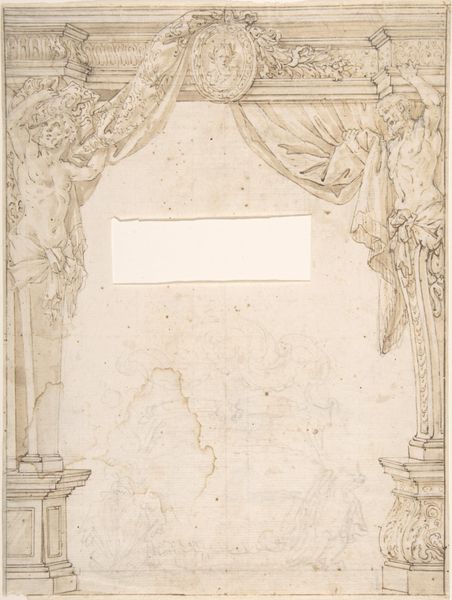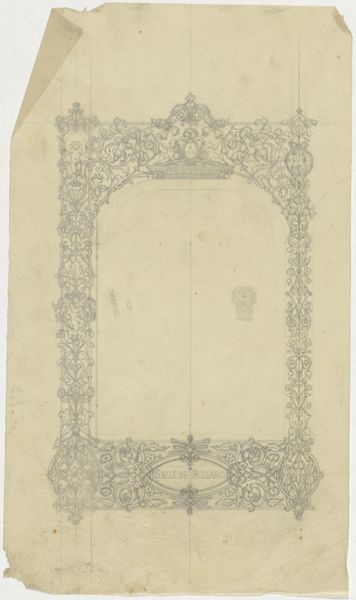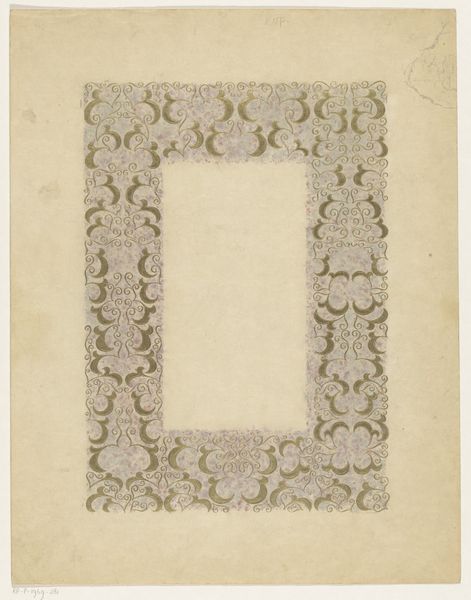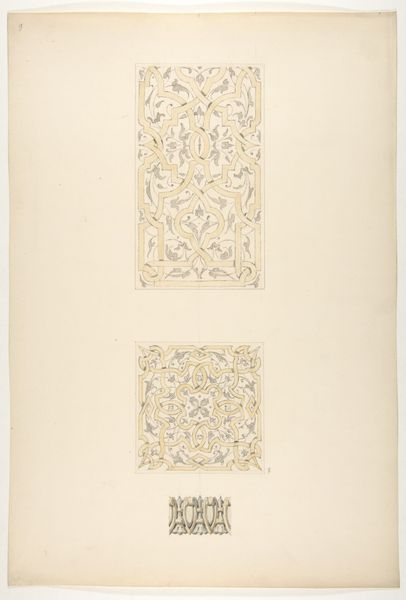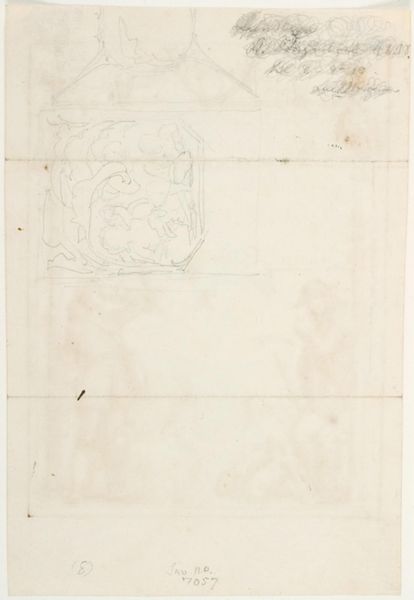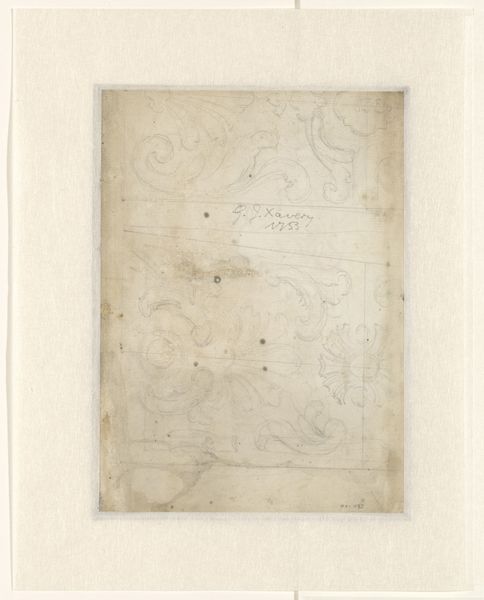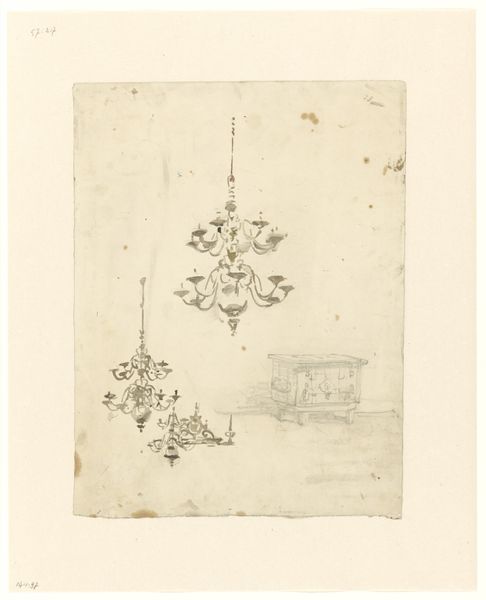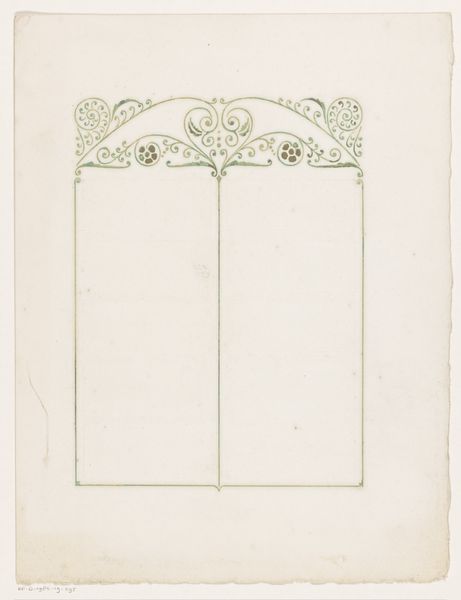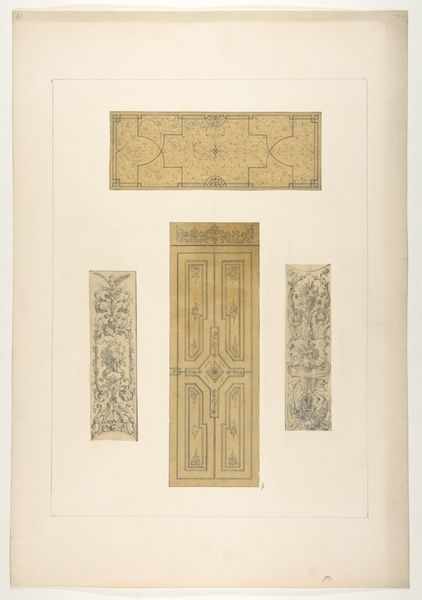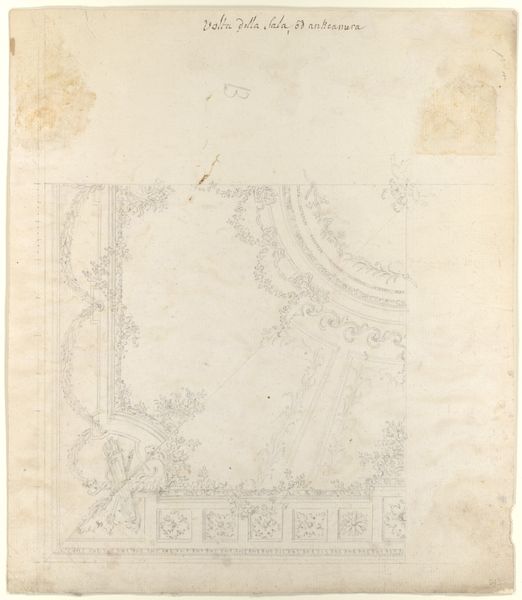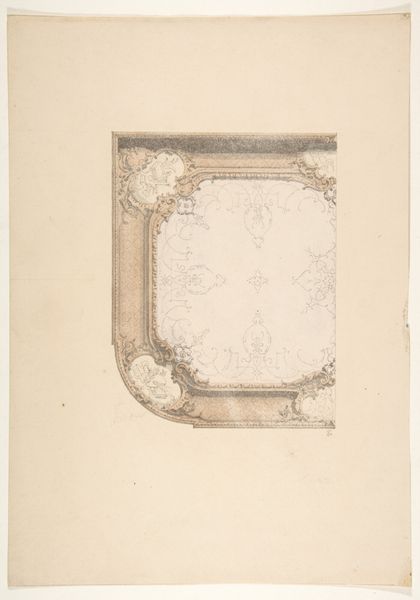
drawing, pen
#
drawing
#
baroque
#
form
#
line
#
pen
#
decorative-art
Dimensions: height 147 mm, width 117 mm
Copyright: Rijks Museum: Open Domain
Editor: This is a drawing titled "Ontwerp voor een lijst met twee putti," or "Design for a Frame with Two Putti" by Giovanni Battista Foggini, dating back to around 1700. It's a pen drawing, quite intricate. I find it very evocative of the Baroque period. What strikes you about this piece? Curator: It's fascinating how Foggini, positioned within the Baroque era, conceptualizes the role of art and imagery itself. This drawing wasn't just created in a vacuum. We need to think about its function: a design for a frame. Who was this frame for? A noble family, perhaps? How would its presence in their household contribute to their social standing? Editor: So the design itself is almost a political statement? Curator: Precisely. During the Baroque, art was strategically employed. Notice the putti; these cherubic figures often symbolize divine love or prosperity. Their inclusion suggests an intention to imbue whatever this frame would hold with a sense of legitimacy and elevated status. Editor: It’s interesting to consider the museum itself as another layer influencing our reception today. If the artwork it was framing no longer exists, does this empty frame lose meaning? Or does the empty center speak of something else? Curator: That’s a very perceptive question. Does removing the content highlight the ornamental frame, or even question art’s overall purpose and authority? The lack of art forces you to interpret its place in the world in general, which could become an important question for art and our current historical moment. Editor: I hadn’t considered it that way. Thanks for offering that different frame to analyze its original frame! Curator: My pleasure. Hopefully, our discussion illuminated how socio-political contexts profoundly impact both the creation and interpretation of art, then and now.
Comments
No comments
Be the first to comment and join the conversation on the ultimate creative platform.

